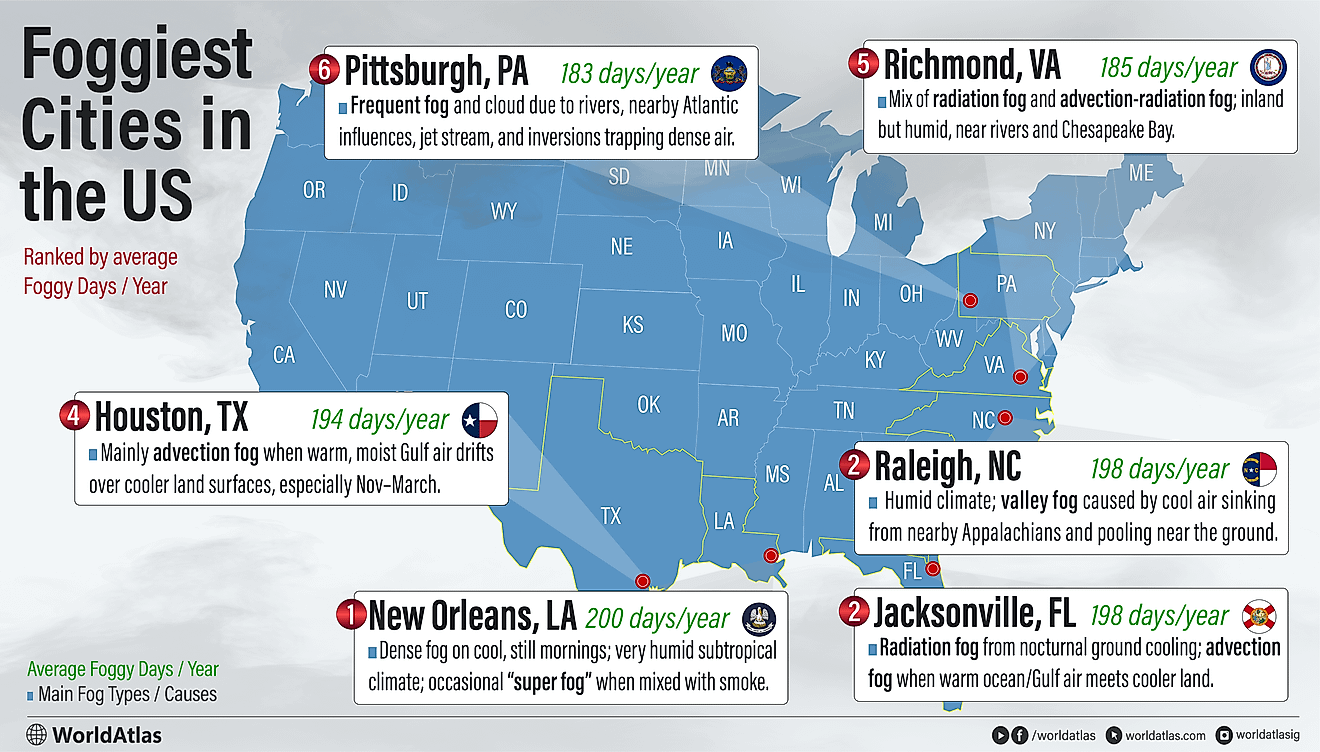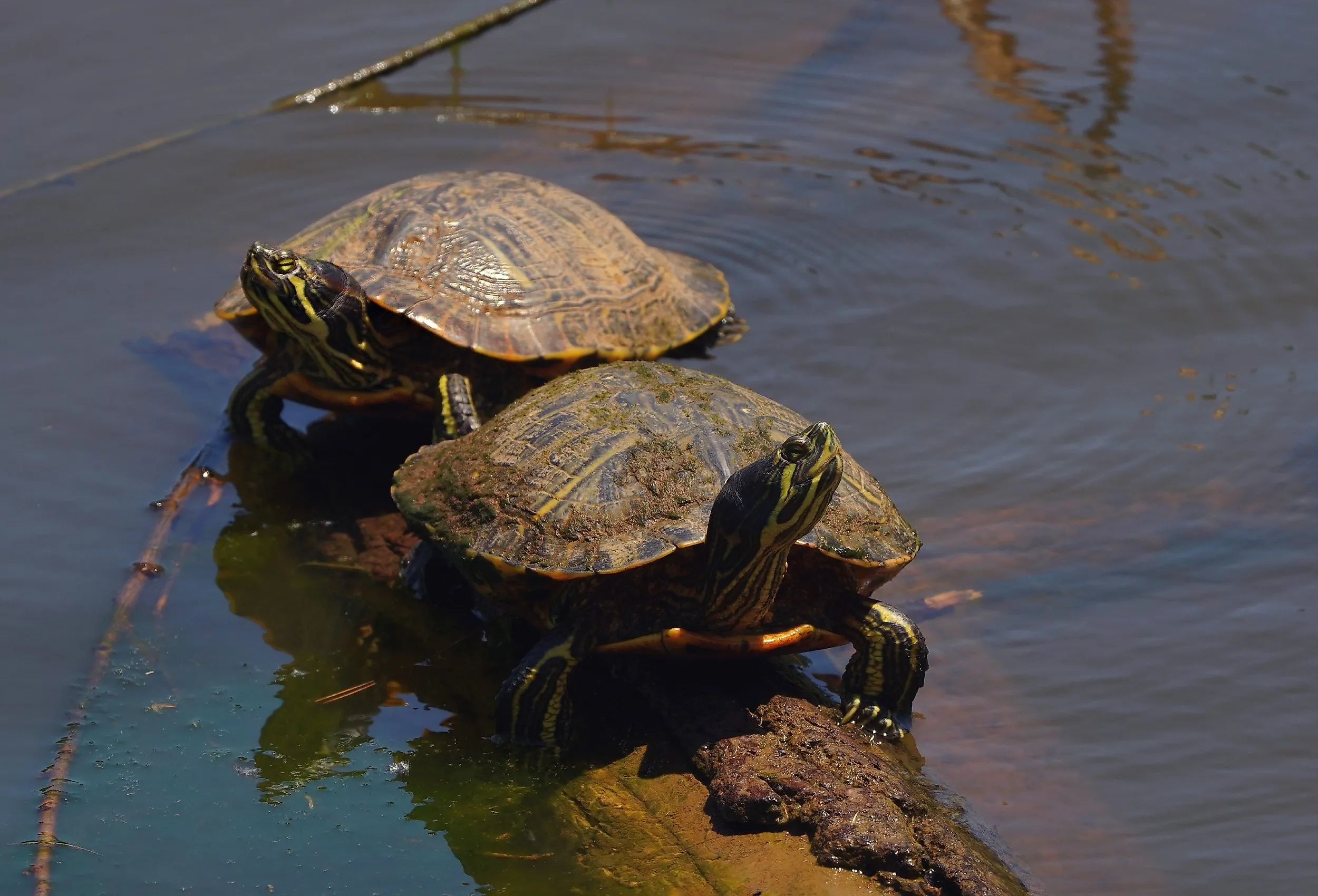
Animals Native To Alabama
The US State of Alabama is one of the country's most biologically diverse states and is home to over 4,533 documented species and around 62 native animals. Alabama's abundance of wildlife is due to its warm, moist climate and diverse topography, ranging from the Cumberland Plateau in North Alabama to the Coastal Plain in the central/southern parts. The state supports a vast catalog of land-based ecosystems, including forests, woodlands, wetlands, glades, and prairies. Water-based ecosystems are also plentiful in Alabama, partly due to the state supporting 77,000 miles of rivers and streams. This Southeastern state's species diversity is a marvel, hosting a colorful collection of mammals, reptiles, and insects.
Red Hills Salamander
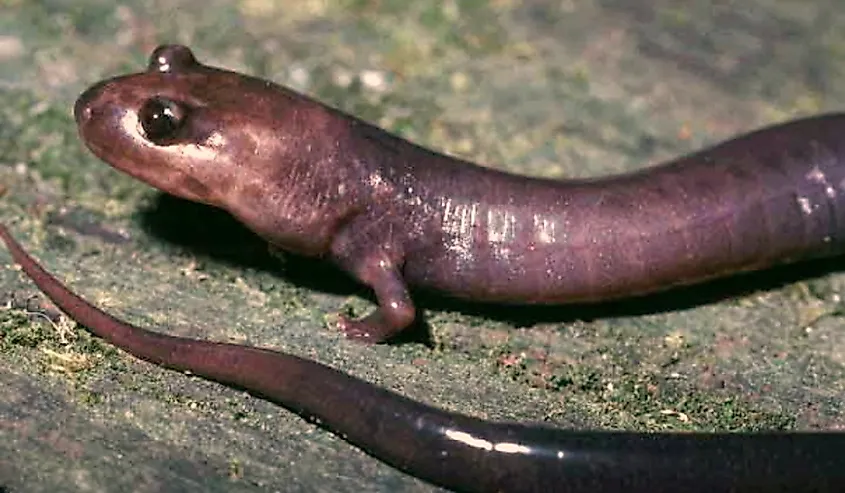
The Red Hills Salamander (Phaeognathus hubrichti) is a land-dwelling salamander that is endemic to Alabama. In other words, this large salamander is only found in Alabama. The Red Hills Salamander thrives within a small range, specifically found between the Alabama and Conecuh Rivers spanning six of the state counties: Butler, Wilcox, Conecuh, Covington, Crenshaw, and Monroe. Red Hills Salamanders are stealth predators and wait for their prey to trespass their burrow entrance before ambushing them. These salamanders often prey on invertebrates like spiders, millipedes, land snails, earthworms, beetles, ants, and even the larvae of small insects.
In 2000, a local elementary school petitioned the state legislature to recognize the Red Hills Salamander as the official state amphibian. Since 1976, these salamanders have been federally recognized as a threatened species due to habitat loss, especially from logging activities. The Red Hills Salamander was the first North American amphibian to receive federal protection.
Alabama Beach Mouse
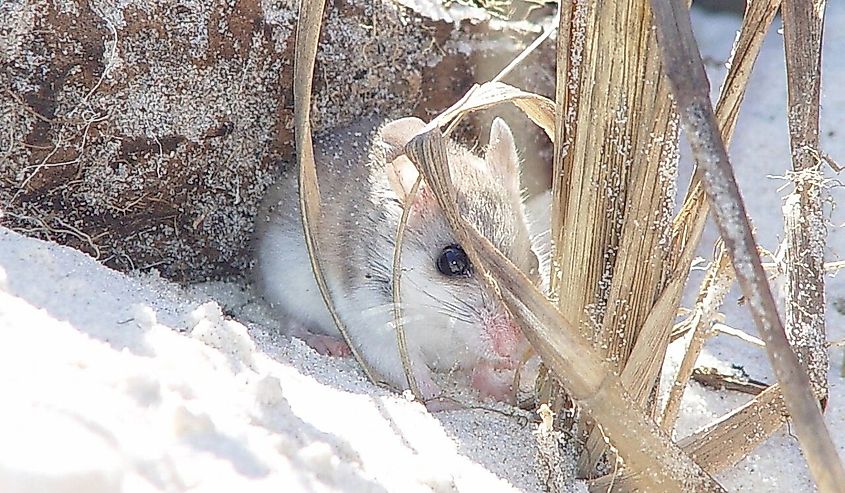
The Alabama Beach Mouse (Perosomyscus polionotus ammobates) is a small rodent whose scientific name translates to "pointed mouse," "gray-eared," and "sand walker" in Greek and Latin. These mice species thrive in coastal forest regions, sand dunes, and vegetative environments on the Gulf of Mexico. Specifically, they've been found in areas like Romar Beach, Pine Beach, Gulf Highlands, the Gulf State Park, and in front of Mort Morgan. Alabama beach mice have a diet consisting of sea oat seeds but are also known to eat insects, scrub acorns, and spiders.
These mice species are vital to the growth of plants in the sand dunes because they gather and disperse seeds across the environment. In turn, the presence of sand dunes protects the mice from harsh environmental conditions and weather forces like hurricanes.
The federal government recognizes the Alabama Beach Mouse as an endangered species. Much like the Perdido Key Beach Mouse, the Alabama Beach Mouse is one of the most threatened rodents in North America because of habitat destruction for commercial development, specifically along the Gulf Coast.
Common Snapping Turtle
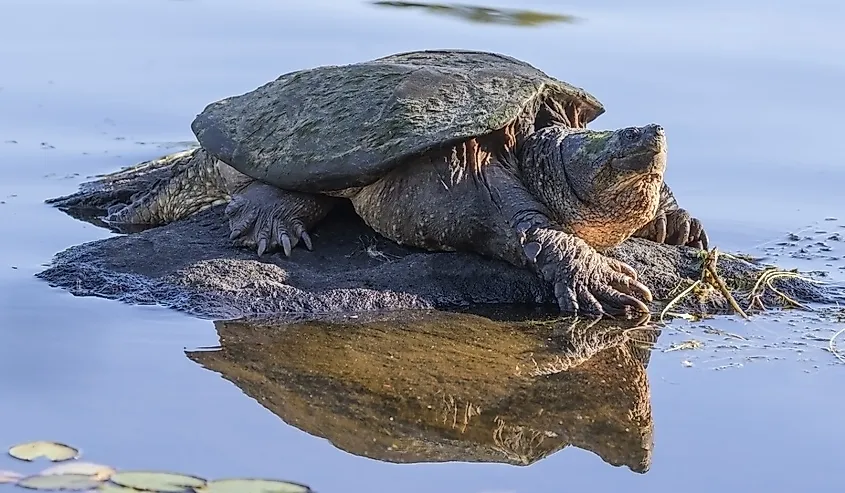
The common snapping turtle (Chelydra serpentina) is a species of large freshwater turtle found in Alabama around shallow water bodies like ponds, lakes, or streams. Their natural range is vast, extending from Southeastern Canada and the Southwest towards the Rocky Mountains to as far as Nova Scotia and Florida. These snapping turtles typically live in aquatic environments of freshwater or brackish waters (though they can travel overland).
Common snapping turtles are omnivores and often consume aquatic vegetation and animals like insects, crustaceans, snails, earthworms, clams, leeches, freshwater sponges, adult fishes, fish eggs, tubificid worms, frogs, toads, salamanders, snakes, small turtles, birds, and even small mammals. Despite its size, the snapping turtle is known to be extremely aggressive, possessing a bite force strong enough to sever a finger!
Eastern Mole
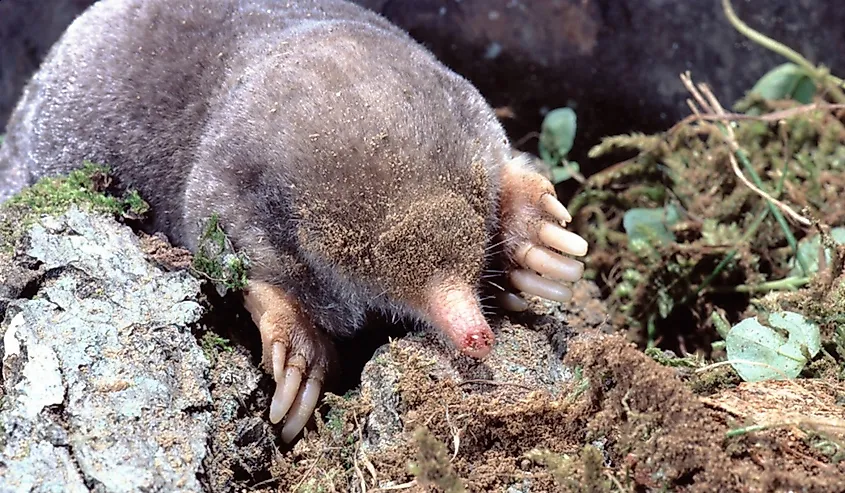
The Eastern Mole (Scalopus aquaticus) is the only mole species found in Alabama. On a larger scale, this mole species lives throughout Eastern and Central North America. Eastern Moles thrive in various habitats, such as pastures and forests or residential yards and parks. This insectivorous species eats grubs, worms, and insects but also consumes plant material. The Eastern Mole spends the majority of its life underground, creating burrows and tunnels, which expend a significant amount of energy. As a result, Eastern Moles must eat 70 to 100% of their weight every day.
Though their conservation status is not well-known, their habitats are often subject to conversion for commercial development or farmland, which can impact fragmented and small populations of Eastern Moles living in a specific area.
Appalachian Cottontail
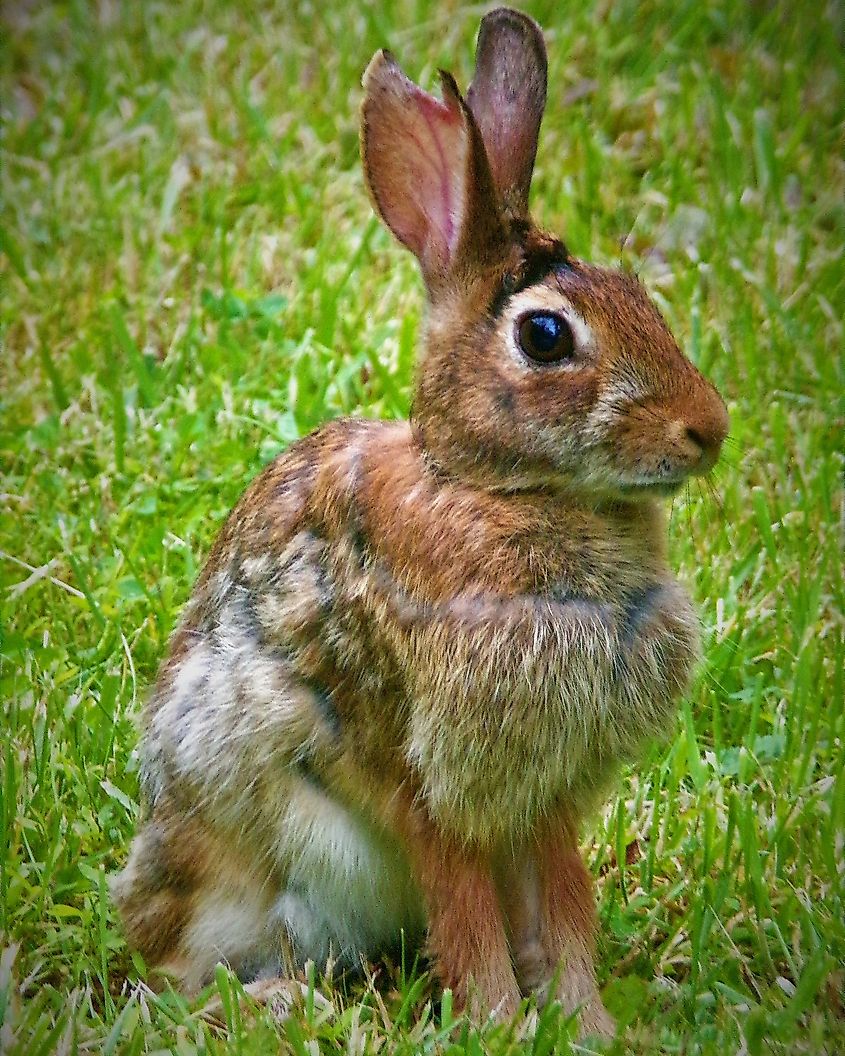
The Appalachian Cottontail (Sylvilagus obscurus) bears a striking resemblance to the Eastern Cottontail, despite being smaller in size. The Appalachian Cottontail lives in Northern Alabama, with a distribution that includes the Appalachians and patches from Pennsylvania to northeast Georgia. Their habitat includes (but is not limited to) environments with a lot of cover from conifer trees and vegetation, hardwood forests, and reclaimed coal-mining lands.
The Appalachian Cottontails are herbivorous species, relying on herbaceous forages during the spring and summer seasons, with an affinity for woody vegetation in the winter months. These cottontail species have short life spans of less than a year. However, their reproduction rate is astounding, with females birthing litters of 5 to 10 offspring! In Alabama and several other states, the Appalachian Cottontail is considered a conservation concern, despite being an understudied species. Urbanization and the conversion of land for commercial development threaten its population.
Alabama Red-Bellied Turtle
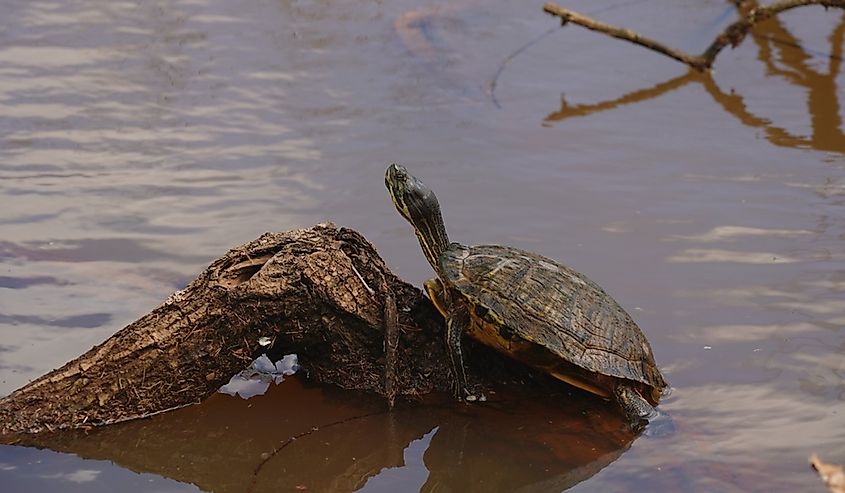
Also known as the Alabama Red-bellied Cooter, the Alabama Red-bellied Turtle (Pseudemys alabamensis) is a freshwater turtle; its bottom shell (or plastron) is vibrant and usually is an orange to light red color. Its habitat consists of shallow, vegetated backwaters along rivers and streams, found within sections of Mobile and Baldwin counties, particularly within the Mobile-Tensaw Delta. In 1990, it was designated as Alabama's state reptile due to the belief that it was endemic to Alabama. However, populations of this reptile have been spotted in Southeastern Mississippi in the Pascagoula River. These freshwater turtles primarily feed on aquatic plants and macrophytes like hydrilla, eel-grass, mud plantain, and brushy pondweed.
Adult Alabama Red-bellied turtles are prey for predators like alligators, while their eggs and young are subject to predators like raccoons, fish crows, large fish, shore birds, snakes, and select mammal species. Humans are also a significant predator, contributing to turtle's declining population thanks to illegal trapping practices and entrapment within fishing nets or crab pots. In 1987, the Alabama Red-bellied turtle was recognized by the federal government as an endangered species and is considered a species with the "highest conservation concern." There is speculation that the population is below 10,000 turtles, with a possibility of numbers as low as 1,000.
Glass Lizards
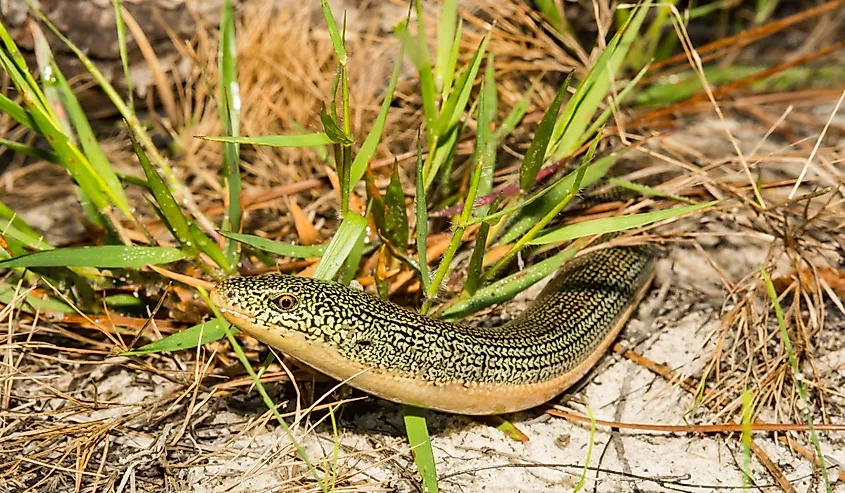
Glass lizards are reptiles that belong to the genus Ophisaurus (which translates to "snakelike lizard" in Greek). These reptiles are often mistaken for snakes because they lack limbs or only have vestigial legs. Despite bearing a striking resemblance to snakes, these reptiles are a type of lizard, possessing eyelids and ear holes, which snakes lack. Most species of glass lizards live in Asia, while glass lizards in the US are only found in the Southeast region, especially in Alabama.
In Alabama, glass lizards are completely limbless! The state is home to three species of glass lizards: the Eastern slender glass lizard (O. attenuatus), mimic Glass Lizard (O. mimicus), and the Eastern Glass Lizard (O. ventralis). In Alabama, these reptiles prey on insects like grasshoppers, crickets, katydids, beetles, spiders, isopods, and caterpillars. Larger species have also been reported to prey on smaller lizards, snakes, and even young mammals.
Glass lizards are harmless to humans and nonvenomous; they are fragile species that must be handled gently to avoid tail detachment or thrashing. Glass lizards also have the amazing ability to regrow their tails should it ever become detached from their body. This process takes several months and results in a shorter tail than the original appendage (and lighter in color).
American Alligator
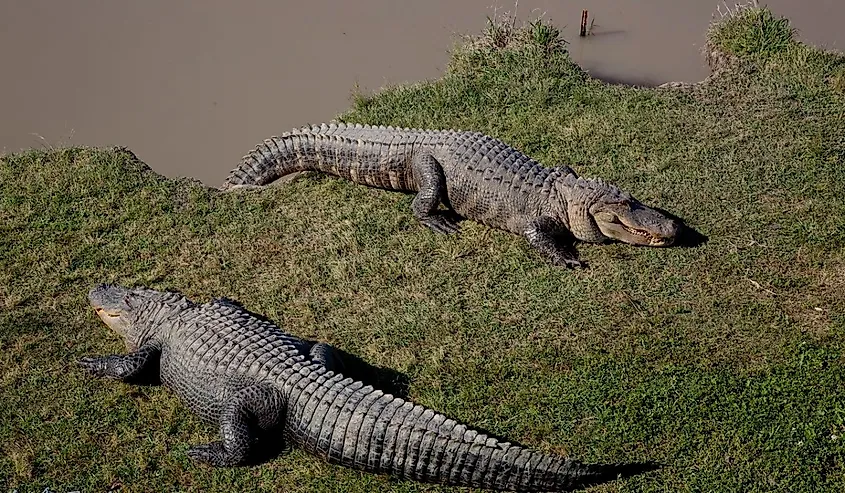
People commonly refer to the American Alligator (Alligator mississippiensis) as "gator" or the common alligator. This crocodilian reptile is one of the largest reptiles in North America, native (and endemic) to the Southeastern US. The reptile is found along the Atlantic Coast, from North Carolina to Florida, as well as in areas around the Gulf of Mexico to Texas. They live in wetland habitats and thrive in marshes and swamps but are also found in rivers, streams, lakes, and ponds. The American Alligators are carnivorous reptiles that feast on fish, snails, invertebrates, and even mammals that wander on the shores of their habitual waters.
Typically, American Alligators found in Alabama (and also in Southern Arkansas and the north end of North Carolina) are small in size. However, the largest gator species caught in Alabama spanned 15 feet in length and weighed over 1,000 pounds! In 1967, the American Alligators were recognized as an endangered species, but their population has since recovered. However, human activities like wetland development and draining threaten their habitats.
American Black Bear
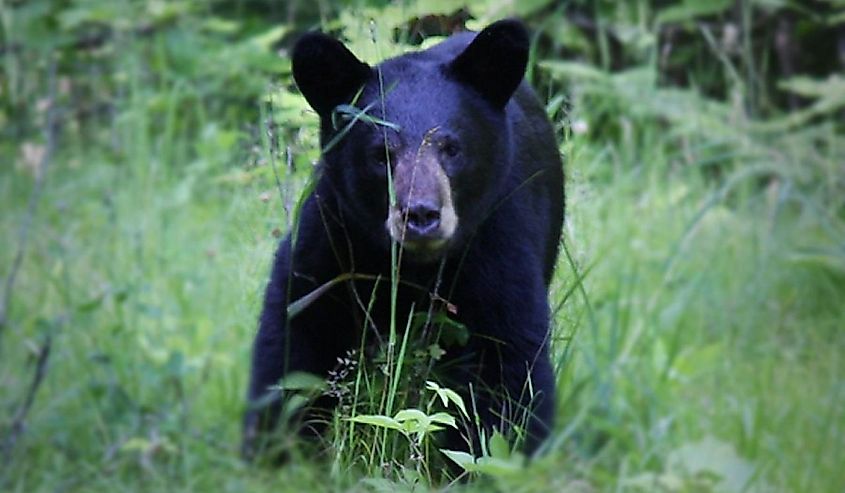
The American Black Bear (Ursus americanus), historically, was only found in Southwestern Alabama around the Mobile, Washington, and Clarke Counties but is believed to have immigrated into Northeast Alabama. Sporadically, there are sightings of these bears throughout the state. Though a majority of their diet consists of fruits, nuts, and seeds, American Black Bears will eat reptiles, birds, and small mammals like beavers or young moose. They are opportunistic feeders and will consume food that is available to them.
Despite their intimidating nature, black bears are intelligent, shy, and will generally avoid humans. In "bear country" areas, the contact between humans and bears is further minimized with simple practices like using bear-proof containers for waste, feeding domestic pets indoors, and keeping outdoor barbeque grills free of food remnants.
Since the late 19th century, the black bear population in Alabama has declined due to deforestation and urbanization. Other factors such as human interactions, inconsistent food sources, and their small population size make them vulnerable to local extinction. In Alabama, it is prohibited to kill, capture, or take American Black Bears without a permit from the Alabama Department of Conservation and Natural Resources or a scientific collection permit.
Rainbow Snake
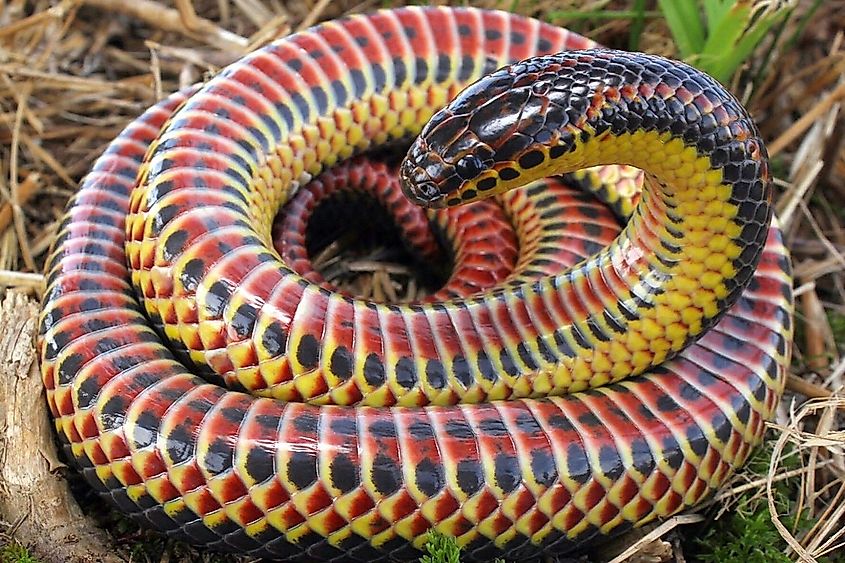
The Rainbow Snake (Farancia erytrogramma) is a large nonvenomous snake found in Alabama and endemic to Southeastern North America. Also known as eel moccasins, Rainbow Snakes can also be found in South Carolina, Florida, Georgia, Louisana, Maryland, Mississippi, North Carolina, and Virginia. As semi-aquatic reptiles, Rainbow Snakes prefer environments within clear streams, rivers, and spring-fed runs. They also tend to seek cover in woody debris along the edges of streams or vegetation mats near the edges of ponds. Rainbow Snakes are nocturnal hunters and prey on fish (like eels) at night while digesting it during the day. They've also been known to forage and feed on various amphibians and earthworms.
They are fairly large reptiles and can grow over 6 feet. Female Rainbow Snakes are often larger than their male counterparts. The exact population and distribution of Rainbow Snakes in Alabama is unknown because of its rarity and secretive nature.
Alabama's diverse topography and climate make the state ideal for hosting a collection of native species, from the Common snapping turtle to the shy and timid American Black Bears named Alabama's state mammal in 2006. Many of these animals are also recognized and protected by the state, with over 100 protected animals in Alabama. The next time you are out in nature in Alabama, be sure to watch out for its native species.











